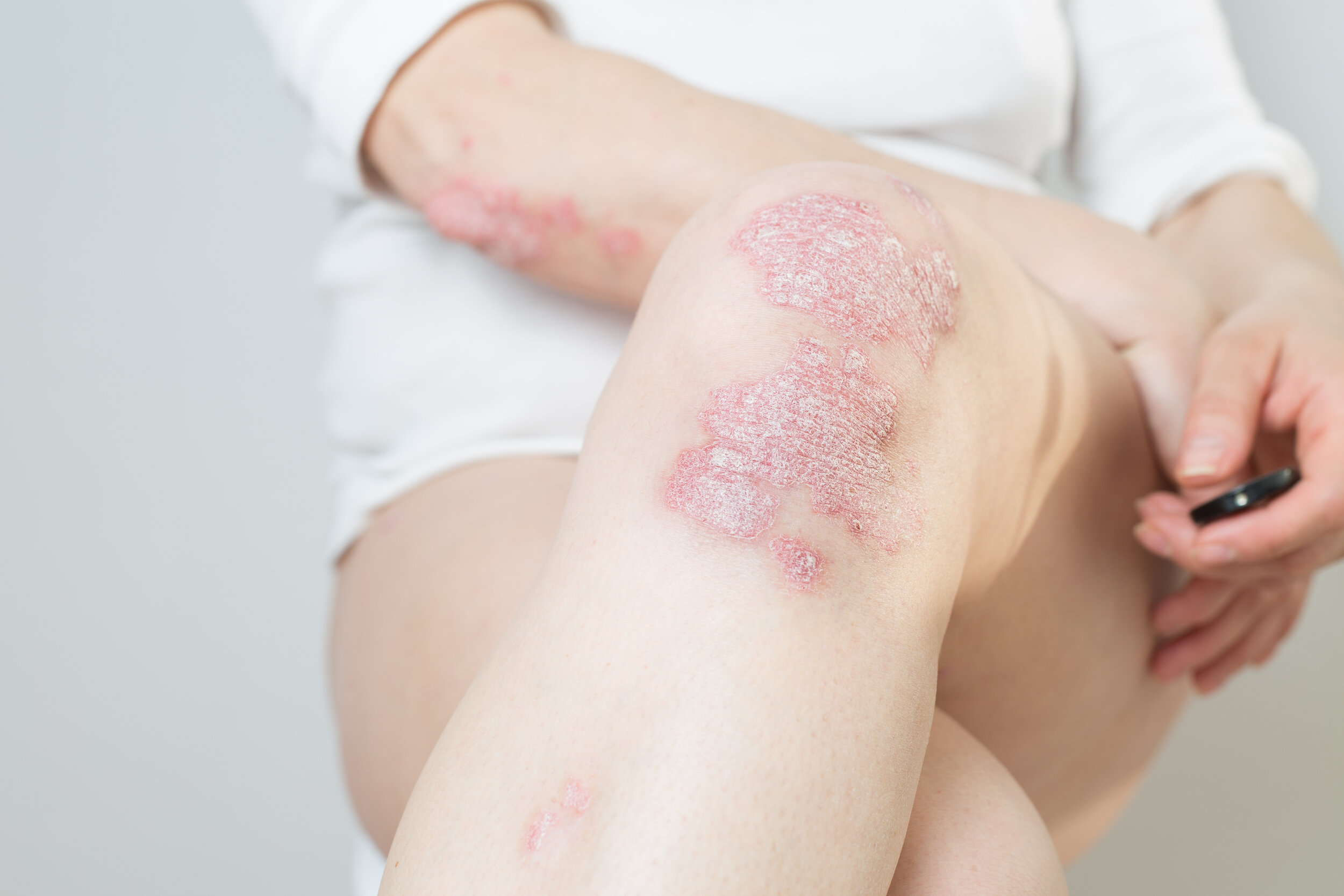Understanding Psoriasis: More Than Just a Skin Condition
As we observe Psoriasis Awareness Month this August, it's the perfect time to shed light on this widespread yet often misunderstood skin condition. At Dermatology of North Asheville, we see many patients struggling with psoriasis, and I want to help you understand what it is, how to recognize it, and what treatment options are available.
What Makes Psoriasis Different?
Psoriasis affects up to 11% of people worldwide, making it one of the most common chronic skin conditions. Unlike other skin issues, psoriasis stems from your body's immune system working overtime. Think of it as your skin cells getting mixed signals—instead of the normal 28-day renewal cycle, new skin cells rush to the surface in just 3-7 days.
This accelerated process creates the hallmark signs we see: thick, silvery scales on red, inflamed patches of skin. The immune system's hyperactivity also increases blood flow to these areas, causing the characteristic redness and irritation.
Where Psoriasis Commonly Appears
While psoriasis can develop anywhere on your body, certain areas are more susceptible:
Elbows and knees (the most frequent locations)
Scalp and hairline
Lower back
Around the navel
Fingernails and toenails
Even intimate areas (which may be the only affected region)
During your dermatology visit, don't be surprised when I examine your nails with a magnifying glass—nail changes can be an important clue in diagnosing psoriasis.
Recognizing Different Forms of Psoriasis
Plaque Psoriasis represents 80-90% of cases, featuring raised, scaly patches larger than a centimeter. These typically appear on elbows, knees, and back.
Guttate Psoriasis creates smaller, drop-like lesions scattered across the torso and limbs, often triggered by strep throat or other infections.
Inverse Psoriasis develops in skin folds like underarms and groin areas, appearing as smooth, red patches with minimal scaling.
Nail Psoriasis causes pitting, ridging, and discoloration in fingernails and toenails, and may indicate higher arthritis risk.
Psoriatic Arthritis affects joints with morning stiffness that improves with movement. Surprisingly, some patients develop joint symptoms before any skin changes appear.
Pustular and Erythrodermic Psoriasis are rare but serious forms requiring immediate medical attention and possible hospitalization.
Modern Treatment Approaches
Today's psoriasis treatments offer hope for long-term management. Remember, we focus on control rather than cure, but excellent options exist:
Topical Treatments remain the foundation of care. Prescription steroid creams like triamcinolone and clobetasol, often combined with calcipotriene (a vitamin D derivative), can effectively manage localized outbreaks.
Biologic Medications have revolutionized psoriasis care. These targeted injections, given anywhere from every two weeks to every three months, don't just treat skin symptoms—they can also address psoriatic arthritis and may even reduce cardiovascular risks associated with chronic inflammation.
Oral Medications like Otezla offer convenient treatment without significant immune suppression, while older options like methotrexate remain useful in specific situations.
The Bigger Picture
Here's what's crucial to understand: psoriasis extends far beyond skin deep. It's a systemic inflammatory condition that can affect your overall health, joint function, and quality of life. This is why comprehensive care from a dermatologist is so important.
Living with psoriasis means partnering with your healthcare team for long-term management. While flares and remissions are normal, today's treatments can help you maintain clearer skin and better overall health.
If you're experiencing persistent red, scaly patches or have concerns about psoriasis, don't wait. Early diagnosis and appropriate treatment can make a significant difference in managing this condition effectively.
For additional resources, visit the American Academy of Dermatology website.

